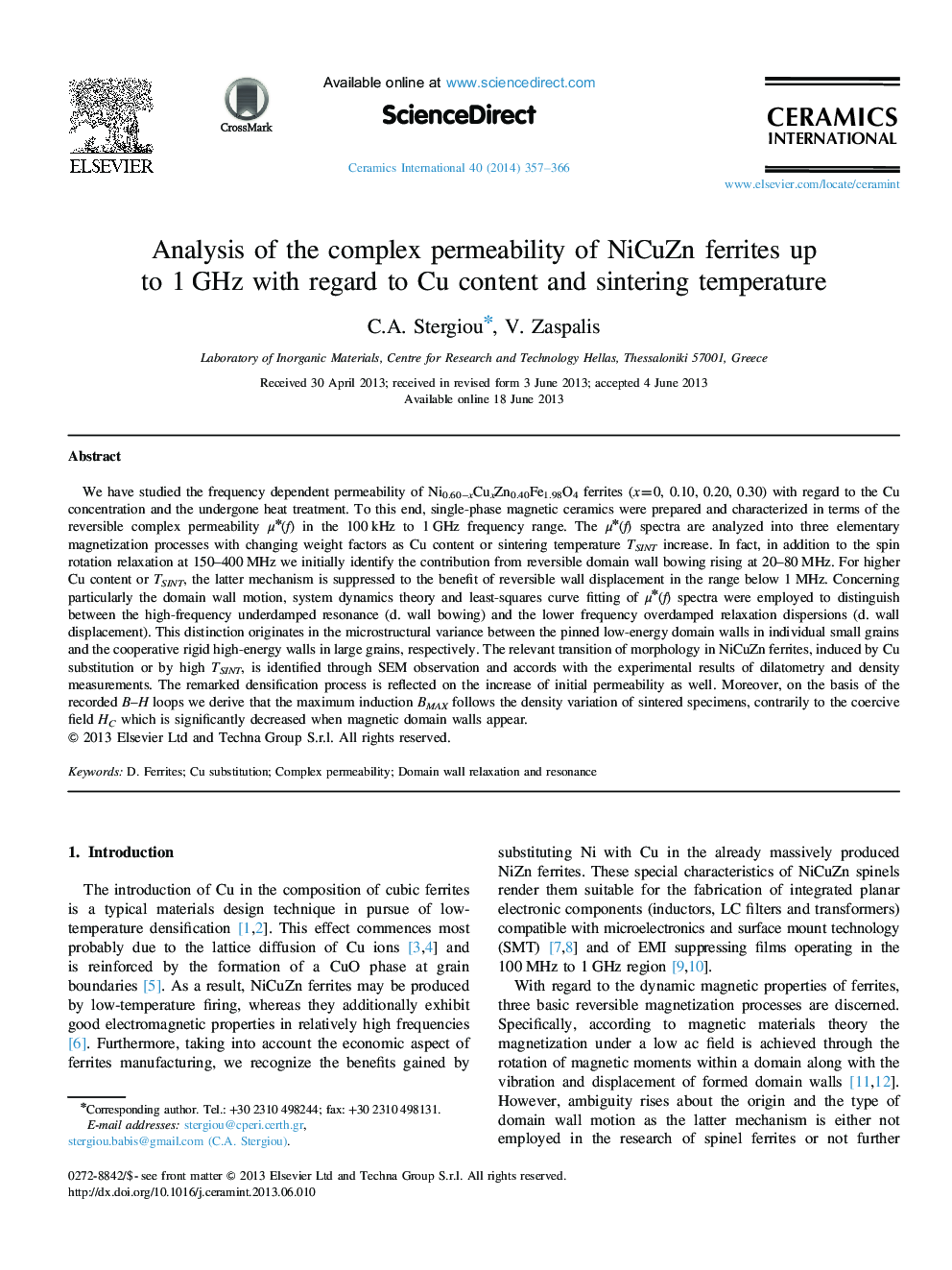| Article ID | Journal | Published Year | Pages | File Type |
|---|---|---|---|---|
| 1462268 | Ceramics International | 2014 | 10 Pages |
We have studied the frequency dependent permeability of Ni0.60−xCuxZn0.40Fe1.98O4 ferrites (x=0, 0.10, 0.20, 0.30) with regard to the Cu concentration and the undergone heat treatment. To this end, single-phase magnetic ceramics were prepared and characterized in terms of the reversible complex permeability μ⁎(f) in the 100 kHz to 1 GHz frequency range. The μ⁎(f) spectra are analyzed into three elementary magnetization processes with changing weight factors as Cu content or sintering temperature TSINT increase. In fact, in addition to the spin rotation relaxation at 150–400 MHz we initially identify the contribution from reversible domain wall bowing rising at 20–80 MHz. For higher Cu content or TSINT, the latter mechanism is suppressed to the benefit of reversible wall displacement in the range below 1 MHz. Concerning particularly the domain wall motion, system dynamics theory and least-squares curve fitting of μ⁎(f) spectra were employed to distinguish between the high-frequency underdamped resonance (d. wall bowing) and the lower frequency overdamped relaxation dispersions (d. wall displacement). This distinction originates in the microstructural variance between the pinned low-energy domain walls in individual small grains and the cooperative rigid high-energy walls in large grains, respectively. The relevant transition of morphology in NiCuZn ferrites, induced by Cu substitution or by high TSINT, is identified through SEM observation and accords with the experimental results of dilatometry and density measurements. The remarked densification process is reflected on the increase of initial permeability as well. Moreover, on the basis of the recorded B–H loops we derive that the maximum induction BMAX follows the density variation of sintered specimens, contrarily to the coercive field HC which is significantly decreased when magnetic domain walls appear.
